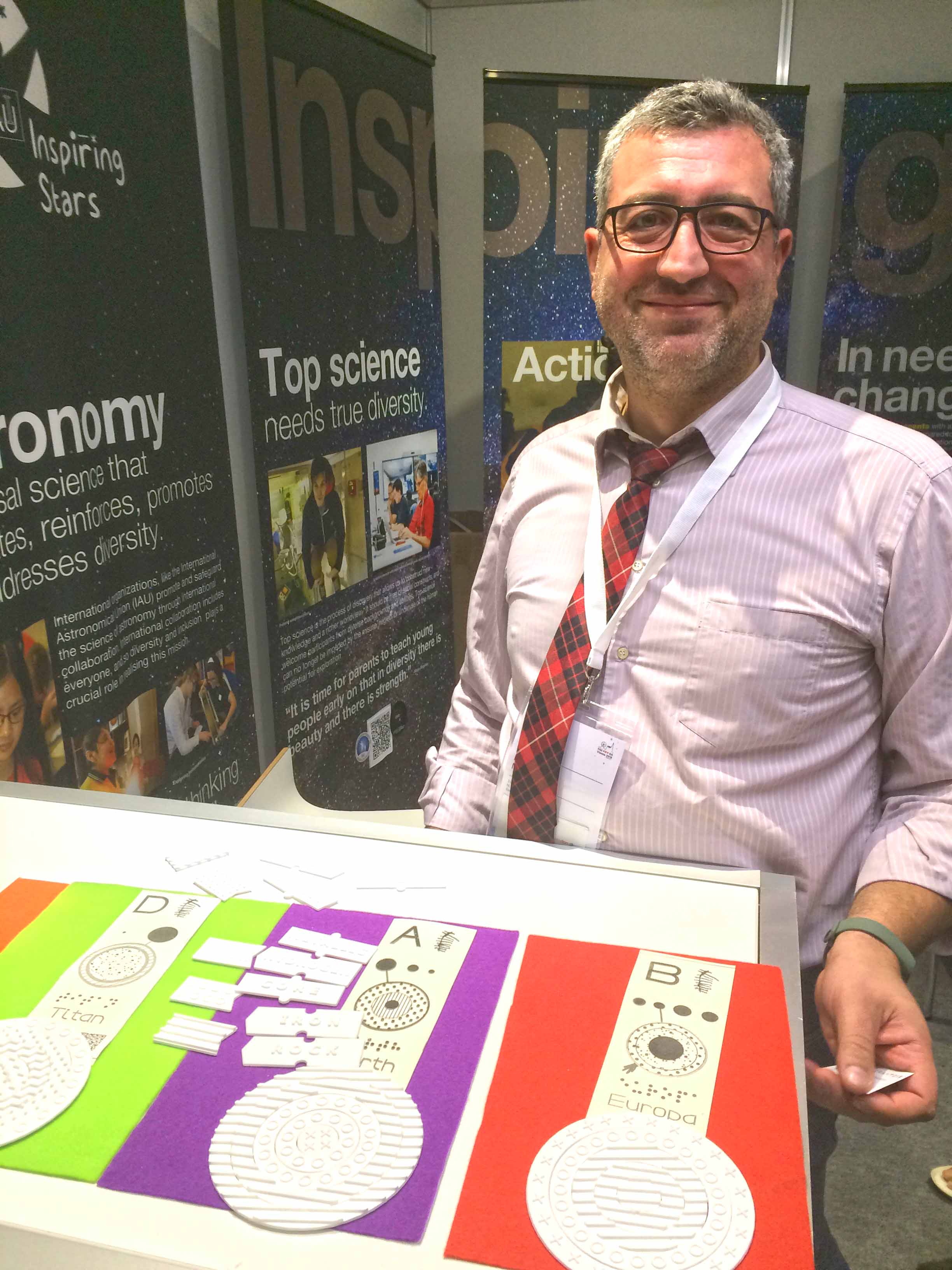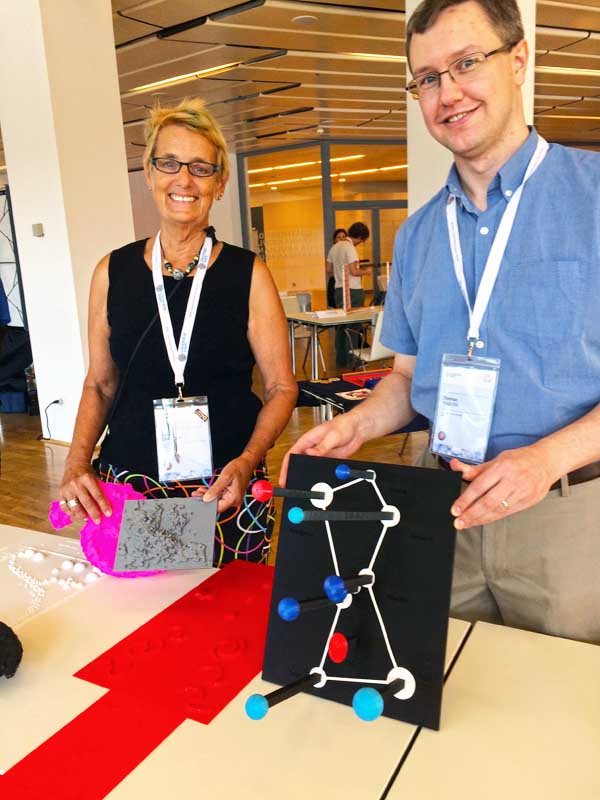Astronomy for the visually impaired and blind
Brief Introduction
I was first introduced to Astronomy for the Visually Impaired and Blind (AVIB) in a special session held at the 2018 Vienna meeting of the International Astronomical Union. My friend and flight instructor, the dynamic and tireless astronomer Carol Christian presented her work, and introduced me to Tom Madura and Nikos Nerantzis, who also lead efforts to teach astronomy to the blind. In December 2018 I invited Tom to visit the UC Berkeley Astronomy Department to speak about teaching astronomy to the visually impaired and blind.
Goals for 2023-2024
- Assemble a list of Bay Area scientists and educators interested in AVIB. Send me an email if you would like to be included in an email list.
- Conduct an Astronomy Department Astro Party for the visually impaired and blind, with training material for the presenter(s)
- Determine the key diagrams needed in teaching astronomy, planetary science, cosmology, instrumentation, astrobiology and SETI, and determine which have yet to be converted into a resource for the blind.
Resources:
- Tom Madura’s presentation at UC Berkeley, December 6, 2018 – pdf
- 3D – Astronomy from the Space Telescope Science Institute
- NASA 3D Models
- IAU Astronomy for Equity and Inclusion
- NASA Chandra X-ray Observatory Braille/Tactile Posters and 3D Printing
- Touch of the Universe tactile kits
- Astronomy without Borders
- Scientific American article by Wanda Diaz-Merced
- Models by Simon Kraus – pdf
- Amazing Space Tactile Astronomy
- Astronomy Lessons for the Sight Impaired – University of Washington
- Touch the Universe – Braille Book of Astronomy
- AAS Working Group on Accessibility and Disability (WGAD)
- Out of the Darkness (2015 research article)

